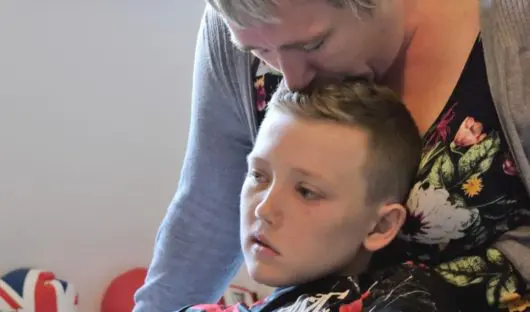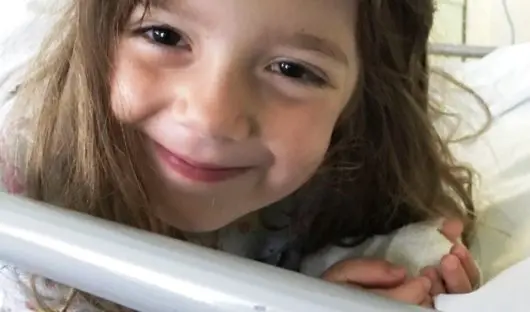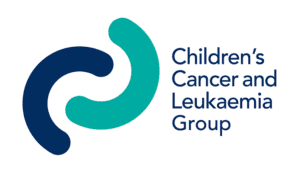Wilms’ tumour
Wilms’ tumour is a type of kidney (renal) cancer in children. About 80-85 children in the UK develop a Wilms’ tumour each year. It most often affects children under the age of seven. It is named after Dr Max Wilms, who first described this type of cancer.
It is thought to develop from immature cells in the embryo. These cells are involved in the development of the child’s kidneys while they are in the womb. The cells usually disappear at birth, but in many children with Wilms’ tumour, clusters of primitive kidney cells, called ‘nephrogenic rests’ can still be found.
The kidneys
The kidneys are a pair of organs found at the back of the abdomen. They clean the blood by removing excess fluids and waste products, which are then converted into urine.
Causes
In most children, the causes of Wilms’ tumour are unknown. Very rarely, people who develop Wilms’ tumour have other specific conditions which are present at birth (congenital malformations). These include the lack of an iris in the eye (aniridia), abnormalities of the genitals, and a condition where one side of the body is slightly larger than the other (hemihypertrophy).
In 1 in 100 people with Wilms’ tumour, another family member will also have Wilms’ tumour. However, genetic factors only account for a small number of children with kidney cancer.
Signs and symptoms
The most common symptom is a swollen abdomen, which is usually painless. Sometimes a parent or carer may feel a lump in the abdomen which can be quite large.
Occasionally, the tumour may bleed slightly and this can irritate the kidney and may be painful. There may be blood in your child’s urine, or their blood pressure may be raised. The child may also have a high temperature (fever), upset stomach, weight loss or a lack of appetite.
How Wilms’ tumour is diagnosed
A variety of tests and investigations may be needed to diagnose a Wilms’ tumour.
An abdominal ultrasound scan is usually the first thing that is done. This will be followed by an MRI and/or CT scan of the abdomen and chest. These scans help doctors to identify exactly where the tumour is and whether it has spread beyond the kidney. This is known as staging.
Urine and blood samples will also be taken to check your child’s kidney function and general health. Most children will go on to have a biopsy, where a sample of tissue is taken from the tumour to confirm the diagnosis. Any tests and investigations that your child needs will be explained to you.
Staging
The stage of a cancer is a term used to describe its size and whether it has spread beyond its original site. Knowing the particular type and the stage of the cancer helps doctors decide on the most appropriate treatment.
In the case of a Wilms’ tumour, the stage is finalised after surgery to remove the tumour. As most Wilms’ tumour patients receive chemotherapy before surgery, you may not know the exact stage of your child’s tumour straight away. An exception is that babies under six months old usually have surgery straight away.
A commonly-used staging system for Wilms’ tumour is described below:
- Stage 1: The tumour is only affecting the kidney and has not begun to spread. It can be completely removed with surgery.
- Stage 2: The tumour has begun to spread beyond the kidney to nearby structures, but it’s still possible to remove it completely with surgery.
- Stage 3: The tumour has spread beyond the kidney; either because the tumour has burst before (or during) the operation, has spread to lymph glands (nodes), or has not been completely removed by surgery.
- Stage 4: The tumour has spread to other parts of the body such as the lungs or liver. Tumours in other parts of the body are known as metastases.
- Stage 5: There are tumours in both kidneys (bilateral Wilms’ tumour).
If the tumour comes back after initial treatment, this is known as recurrent cancer or relapse.
Treatment
Treatment is planned by specialists in children’s tumours and cancers. This is usually based in a children’s oncology unit within a main hospital, but some treatment may be given closer to home.
Treatment will depend on a number of factors including how the cells appear under the microscope (histology) and the stage of the tumour. Treatment may include chemotherapy, radiotherapy or surgery.
Surgery
All children with Wilms’ tumour will have surgery. Initially, this may only involve taking a small sample of cells from the tumour to confirm the diagnosis. This is called a biopsy and is usually done under a general anaesthetic using a needle inserted through the skin.
Apart from very young children (under six months), most patients will receive chemotherapy before having a bigger operation to remove the entire tumour. The operation usually involves removing the whole of the affected kidney (nephrectomy). Most people can live normally with only one kidney remaining.
After examining the whole tumour under the microscope, Wilms’ tumours can be divided into a number of risk groups based on knowledge about how these different types of tumours are likely to behave. The treatment following surgery will depend on these risk groups. The risk groups are known as LOW, STANDARD (or INTERMEDIATE), and HIGH.
The majority of tumours are in the ‘standard risk’ group. So called ‘low risk’ tumours require less treatment than standard risk tumours.
Two types of Wilms’ tumour – anaplastic and blastemal – are considered to be ‘higher risk’ than other Wilms’ tumours and require more intensive (stronger) chemotherapy:
- Anaplastic Wilms tumour – About 5-10% of Wilms’ tumours have an appearance called anaplasia, which means the cells look very disorganised under a microscope.
- Blastemal Wilms tumour – This group of high-risk tumours cannot be identified by looking at the biopsy because they occur when a particular type of early kidney cell survives the pre-surgery chemotherapy. These cells are known as blastemal cells. Tumours where most of these cells survive chemotherapy are called ‘blastemal-type’ tumours.
- Other kidney tumours – Other, less common types of kidney tumours may occur in children. These are usually only recognised after surgery to obtain a tumour sample. ‘Clear cell sarcoma’ and ‘malignant rhabdoid tumour’ of the kidney are two types of cancerous tumour, with their own treatment recommendations.
- Congenital mesoblastic nephroma is a non-cancerous (benign) tumour that occurs in very young children; this type of tumour usually only needs surgery and no other treatment.
Chemotherapy
Chemotherapy is the use of anti-cancer (cytotoxic) drugs to destroy cancer cells. It’s usually given as an injection or drip into a vein (intravenously). Chemotherapy given before surgery is called neoadjuvant or ‘pre-operative’ chemotherapy.
What doctors find out about the tumour after surgery – for example, how the cells look under the microscope and how far the cancer has spread – helps them to decide whether additional chemotherapy should be given (adjuvant chemotherapy). This is to help reduce the risk of the cancer coming back (recurring). This chemotherapy may be given as inpatient or outpatient depending on tumour staging and risk group (see above).
Radiotherapy
Radiotherapy treats cancer by using high-energy rays to destroy the cancer cells, while doing as little harm as possible to normal cells.
Not all children with Wilms’ tumour need radiotherapy. For those that do, the area to be treated depends on the stage of the tumour at diagnosis. Some children receive radiotherapy to the area around the affected kidney or, less commonly, to the whole abdomen. If the tumour has spread to the lungs, then lung radiotherapy may be needed but this depends on how well the cancer responds to initial chemotherapy; it’s not always needed.
Radiotherapy may occasionally be used to shrink tumours that are too large to remove surgically. This will, ideally, allow an operation to be done. Radiotherapy can also be used when tumours have spread elsewhere in the body.
Treatment for bilateral Wilms’ tumour
In about 1 in 20 cases, Wilms’ tumour affects both kidneys. Treatment usually involves surgery to both. The aim of the treatment is to remove as much of the cancer as possible, while leaving as much healthy kidney as possible. Chemotherapy is always given. Sometimes radiotherapy is needed as well.
Late side effects
A small number of children may develop late side effects, sometimes many years later. These include a possible reduction in bone growth, a change in the way the heart and lungs work, and a slight increase in their risk of developing another cancer in later life. Infertility is a possible late side effect, although this is rare. Your child’s doctor or nurse will talk to you about any possible late side effects. These will depend on the exact treatments given.
Follow-up care
Most children with Wilms’ tumour are cured. If the cancer comes back, it’s usually within the first two years. When one kidney is removed, the other will be able to work normally and can take over the work of the other kidney.
Very few children have long-term kidney problems. Your child will have regular check-ups to look for any recurrence or problems following treatment.
Relapse
Most (more than 85%) of children with Wilms’ tumour are successfully treated. However, for a small number of children, the cancer will come back. Uusually this happens after a period of time when the tumour could not be detected. This is known as tumour relapse. There are treatments for relapsed Wilms’ tumour – read My child’s Wilms’ tumour has come back
This information was written by the Children’s Cancer and Leukaemia Group (CCLG)
You might also want to look at
Telling your child they have cancer
Knowing what information your child needs and which words to use when you tell them about cancer.
Find out more
Staying in hospital with your child – what you’ll need
What to expect if your child is staying on a children' cancer ward and what you'll need to take.
Find out more
Help your child cope with side effects of cancer treatment
Every child copes differently with treatment and side effects. Here's what to expect.
Coping with side effects
USEFUL INFORMATION AND SUPPORT
Get a CLIC Sargent Grant
It’s not right that young people and parents have to worry about money when they need to focus on treatment and all that comes with it. So CLIC Sargent gives various grants, right from the moment of diagnosis, to help young people and families cope financially.
Find out more about getting a grantChildren's Cancer and Leukaemia Group (CCLG)
Find more detailed information about Wilms' tumour, including diagnosis, staging and treatment from our friends at CCLG.
Visit the websiteJoin our Facebook group for parents
Share your stories and experiences with other parents. Get advice or share tips to help others, and become part of a supportive community.
Join the groupAre you a cancer dad?
Many dads spend less time in the hospital and don't get the same network of support. Feeling like you have to 'hold the fort' can be isolating and difficult, so it's extra important you have someone to talk to about your challenges.
Join our Mind the Chaps Facebook group for dads